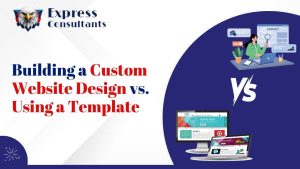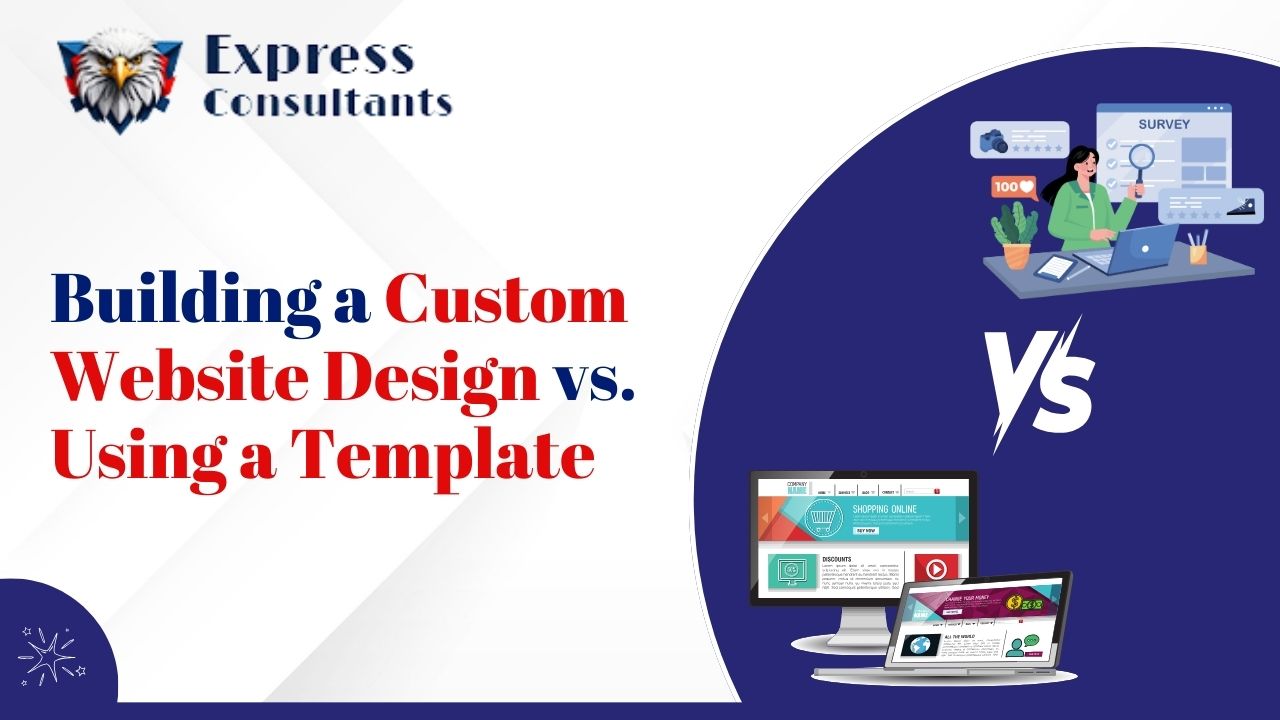



Whether you’re starting a business, building a personal brand, or launching a side project, the decision between custom website design vs. using a template is one you’ll need to make. Which one fits your goals? Well, let’s dig into that and see what works for you!
Simply put, a custom website design is like having a tailored suit. You get exactly what you want, made just for you. This means the layout, functionality, and overall design are created from scratch, catering specifically to your brand and vision. It’s like walking into a design studio and saying, “I want this to look and feel exactly like me.” The process usually involves web developers and designers collaborating closely with you to bring that vision to life. Want a specific feature? You got it. Want a unique user interface? Done.
But here’s the catch—this approach takes time, money, and plenty of communication. However, if you want your website to truly stand out, a custom website design might just be the perfect fit. Think about it like getting an artist to paint a portrait that captures you—it’s personalized and one-of-a-kind.
On the other hand, a template website design is like picking up a ready-made suit from the store. Sure, you might need a little tailoring here and there, but the framework is already done. Templates provide pre-designed layouts and functionalities that allow you to plug in your content and get your site live pretty quickly. Many platforms like WordPress, Wix, and Shopify offer templates for different types of businesses—whether you’re a restaurant, blogger, or e-commerce store.
Templates are super handy, especially if you’re short on time or money. You don’t need to start from scratch; just choose a design you like and modify it to suit your needs. However, there’s one big downside—your site might end up looking a bit too similar to others using the same template. It’s not bad, but it lacks that special touch a custom website brings.
Let’s break it down, shall we? Here’s where the real debate begins—custom website design vs. using a template:
Here’s a handy table comparing Custom Website Design vs. Using a Template:
| Custom Website Design | Using a Template | |
| Cost | Higher cost due to personalized development | Lower cost; templates are often free or inexpensive |
| Time to Build | Takes weeks to months depending on complexity | Quick setup, often can be completed in a day or two |
| Uniqueness | 100% unique, tailored specifically to your brand | Less unique; others may use the same template |
| Flexibility | Highly flexible—designed from scratch to fit any need | Limited flexibility; can customize to an extent but within template’s structure |
| SEO Optimization | Full control over SEO features and coding | Templates can be SEO-friendly, but with some limitations |
| Maintenance | Requires developer for updates or changes | Easier to maintain; most platforms offer self-service management |
| Scalability | Highly scalable as you can add new features over time | Limited scalability; may need to switch templates or platforms to grow |
| Design & Layout Control | Full control over every aspect of design and layout | Pre-set layout, limited to template’s customization options |
| Development Time | Longer, since everything is built from scratch | Shorter, as most of the design work is already done |
| User Experience | Tailored for optimal user experience based on your goals | General user experience designed to fit most users |
| Best For | Businesses with specific needs, branding goals, or long-term growth | Startups, small businesses, or individuals with quick, budget-friendly needs |
It’s all about control. When you build a custom website design, you have full control over how your website looks, how it functions, and how users interact with it. This is especially crucial if you have specific features in mind that a template just can’t provide. For example, if you’re running an online store with unique product display requirements or an interactive portfolio site, a custom-built solution ensures that your vision comes to life without any limitations. You can even optimize it for speed, SEO, and performance from the ground up.
On the flip side, templates are a great starting point if you’re just beginning your digital journey or don’t need anything too fancy. Let’s say you’re a blogger or a small business owner—templates offer a straightforward solution that allows you to focus on your content or product rather than getting bogged down in design details. Plus, many templates are built with SEO in mind, making it easy for you to rank higher in search engines with minimal effort.
Industry Insight: According to a study by ZIPPA, 38% of users will stop engaging with a website if the content or layout is unattractive. That means whether you’re using a custom design or a template, how your website looks really matters. It’s not just about functionality but creating an inviting digital space.
Before you dive headfirst into choosing between a custom website design vs. using a template, it’s worth noting a few other factors. For one, consider your long-term goals. If you’re planning to scale your business, a custom website might be a smart investment from the get-go, giving you more flexibility to grow. Also, don’t forget about maintenance. Custom sites may require a developer for updates, while templates usually offer self-service options for easy adjustments.
Another thought—how comfortable are you with technology? If you’re tech-savvy, you might enjoy tweaking a template or even building a custom website with a platform like Webflow. But if coding and design feel like foreign concepts to you, opting for a template might save you a lot of headaches.
At the end of the day, deciding between building a custom website design vs. using a template depends on your goals, budget, and timeline. If you’re looking for a unique and fully tailored experience, a custom design is the way to go. But if you’re short on time and funds, and don’t mind a more standardized look, templates provide a solid and reliable solution. Either way, ensuring your website is visually appealing and functional should always be your top priority. After all, your website is your digital handshake—make sure it leaves a lasting impression. Ready to start building? The choice is yours.
You may also like :-
A custom website design is built from scratch just for you, while a template is a pre-designed layout that you can customize to an extent. Think of custom websites like getting a tailor-made suit, while templates are like picking one off the rack. Both work, but one is more personalized.
Custom website designs tend to cost more because you’re paying for the time and expertise of designers and developers. Templates, on the other hand, are more budget-friendly since the design work is already done. So, if you’re tight on budget, templates are a solid option.
Building a custom website can take weeks or even months, depending on the complexity. You’re working closely with a designer to make it exactly how you want it. Templates, on the other hand, can be up and running in a day or two—ideal if you’re in a rush.
Not necessarily, Both can be optimized for SEO. However, with a custom site, you have more control over the code, which can give you an edge in fine-tuning for performance and speed. Many templates are also designed with SEO in mind, so it really depends on how well you use the tools available.
Yes, you can, While templates come with a pre-set layout, most allow for customization—changing colors, fonts, images, and even some structural elements. But, there are limits. With a custom design, you’re not boxed into any framework and can make it 100% unique.
Templates are used by many people, so unless you do some heavy customization, there’s a chance your site may resemble others out there. If standing out is super important to you, a custom design might be worth the investment.
It depends on your business goals and budget. If you’re a small business just getting started, a template is often the best way to get online quickly without breaking the bank. But if you want something that really sets you apart from competitors, a custom design could give you that edge.
Yes you can start with a template and upgrade to a custom design as your business grows. It’s a common route for small businesses to keep things cost-effective at first and invest in a custom design when they’re ready to scale.
Custom websites might need more hands-on maintenance, especially if you need to update or change features down the road. With templates, the platform (like WordPress or Wix) usually handles most of the backend stuff, making it easier for non-tech-savvy users to manage updates.
If you’re looking for a quick, affordable solution, templates are a great choice. But if you want something that’s truly tailored to your brand and future growth, a custom design offers more flexibility and uniqueness. It really comes down to your specific needs, goals, and budget.
 Will Smith
Updated: September 7, 2024
Will Smith
Updated: September 7, 2024

